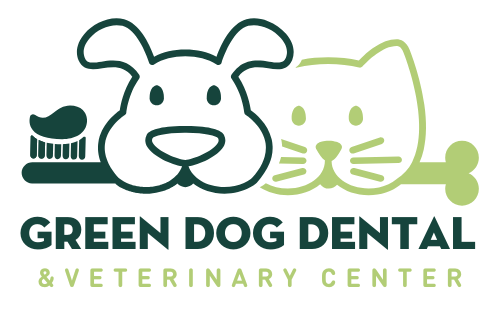
Toothaches can be incredibly painful and at Green Dog we see them all the time. Only a few centuries ago, toothaches could literally be deadly. Historically speaking, people used to die as a result of periodontal disease that led to infections, and even in less serious cases, a toothache can make a person downright miserable.
DOGS DON'T LIKE GOING TO THE DENTIST EITHER
Unfortunately, the same thing goes for our four-legged friends. And since they can’t tell us if they are experiencing dental pain, it’s our responsibility to know the signs of a toothache in dogs and cats so that we can help them get the relief they deserve as quickly as possible.
YOUR VET CAN TELL BEST
It can be very tricky to spot a toothache in a dog or a cat. Even when you bring your pet to the veterinarian with a suspected dental problem, vets often need to take x-rays in order to really get to the root of the problem.
It’s not always easy to get a good look inside your dog or cat’s mouth, and sometimes the problems are within the teeth or gums and won’t be readily visible.
REFUSING TO EAT
That being said, there are some signs to look out for. Reluctance to eat is often one of the first clues. If your dog or cat is in pain, they are unlikely to wolf down their kibble as quickly as usual or chew on hard treats or toys.
If your pet is suddenly eating very slowly or spitting out their kibble and eating each one individually, that could be a sign that they have a toothache.
You may also see that they refuse to eat anything crunchy at all and will only eat if offered wet food. Red or bleeding gums is another sign that your dog may have a toothache. Gum health and tooth health are intrinsically connected, and its unusual for a dog or cat to have a toothache with perfectly healthy gums.
BEWARE RED GUMS
If your dog or cat’s gums are suddenly reddened, or you notice bleeding, that’s a clue that they may be experiencing oral pain. You may also notice excessive drooling. Suddenly drooling, or in the case of animals that are always a little slobbery, drooling more than usual, is your pet’s way of saying “my mouth hurts”.
Even if you take a peek into their mouth and don’t see anything immediately wrong, there are plenty of dental issues (such as a cracked tooth) that may not be immediately apparent but can cause a great deal of pain. Ignoring oral pain is never a good idea.
DON'T IGNORE THE SYMPTOMS OF TOOTH PAIN
Tooth pain is terrible enough, but periodontal disease can also lead to systemic problems in other parts of your pet’s body. If you suspect your dog or cat has a toothache, it’s best to bring them to their veterinarian for a check-up to identify the problem and fix it.
